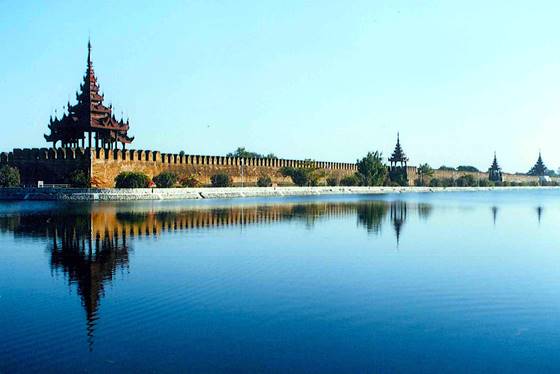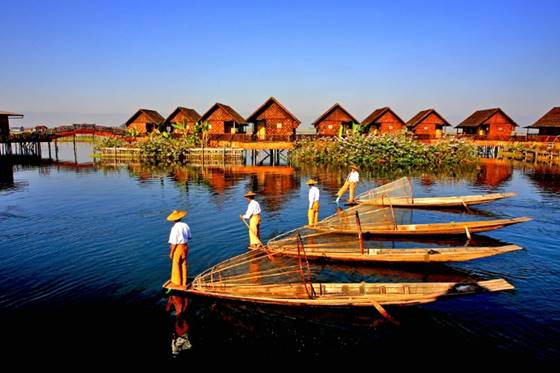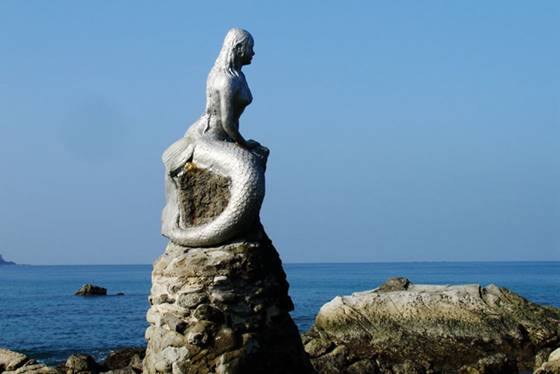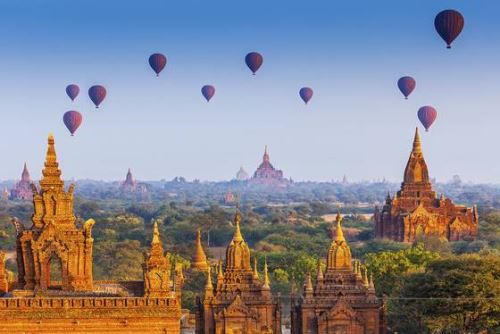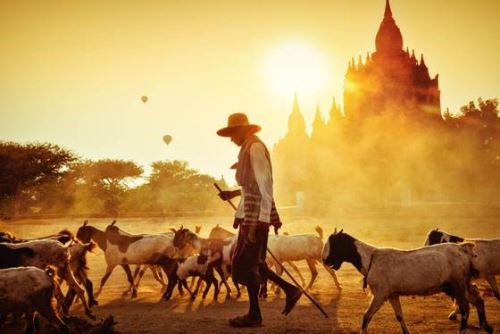Bagan (or Pagan) is an ancient city that was the capital of the first Burmese empire. It is located in the dry central plains of the country, on the eastern bank of the Irrawaddy (or Ayeyarwaddy) River. As the heart of Burma during ancient times, Bagan serves as home to temples and buildings built from the 11th century to the 13th century. There are more than 2,000 pagodas and temples to be found, most of which were built by the ancient kings and leaders of Burma. Among all the cities in Myanmar, Bagan is the most ideal destination for tourists to visit regardless of the time of the year. Unlike cities in the lower part of Myanmar, Bagan does not experience a rainy season and it is the perfect climate of Bagan that enables tourists to discover and explore the ancient city with ease all year round.
Bagan Attractions
Travellers to Bagan will not have to worry about not having any interesting places to visit. In fact, the only problem they may encounter is deciding on which destination to go to first. As the capital of the first Myanmar Empire, Bagan is home to many archaeological si...
Read moreTravellers to Bagan will not have to worry about not having any interesting places to visit. In fact, the only problem they may encounter is deciding on which destination to go to first. As the capital of the first Myanmar Empire, Bagan is home to many archaeological sites. There are many temples, pagodas and monuments to be found throughout the area and visitors can embark on a spiritual and historical journey by going from one temple to another as all the buildings are beautifully and uniquely designed. However, there is more to Bagan than temples and religious monuments. Bagan is also home to Myanmar's archaeological museum, as well as the highly revered Mount Popa.
Ananda Temple
This temple is one of the few remaining examples of Mon architecture; it was damaged during a 1975 earthquake but has been successfully restored. The Ananda Temple is recognized as the best preserved and most revered of Bagan temples. Location: South-east of Tharabar Gate in Old Bagan.
Bagan Archaeological Museum A
This Bagan attraction was officially opened in 1998. Tourists who want to explore the history of Old Bagan can visit the museum to see objects used during the Bagan period. The first floor houses the showrooms for visual arts and coiffures of court ladies, while the second floor has display rooms with religious themes. Opening Hours: 09:30-15:00 daily except Mondays and public holidays. Location: Northern part of Bagan, in the Old Bagan region.
Bu Pagoda (Bu Paya)
The name of this Bagan attraction already gives a perfect description of the place: Bu Paya means ‘a gourd-shaped pagoda.’ According to legend, Pyusawhti rid the area of 'bu,' which was a gourd-like climbing plant that infested the riverbanks. As a reward, he became the heir to the throne of Bagan and its third king. Location: On the eastern bank of the Irrawaddy River.
Dhammayangyi Temple
The Dhammayangyi Temple is one of the four major Bagan monuments and ranks alongside Shwezigon Pagoda, Ananda Temple and Thatbyinnyu Temple in importance. Its grandiose architectural plan is similar to Ananda Temple and was built by King Narathu, also known as Kalagya Min, 'the king killed by Indians.’ Location: East of Shinbinthalaung and Shwesandaw in the region of Old Bagan.
Gawdawpalin Temple
The Gawdawpalin Temple is one of the biggest shrines in Bagan, and the most imposing because of the Buddha images to be found on the ground floor. The building of the two-storey temple was commenced by King Narapatisithu but it was his son who completed the construction. The name of the temple means 'the throne which has worshipped.' Location: North of Meemalaung Kyaung in Old Bagan.
Htilominlo Temple
Like the Shwezigon Pagoda, the Htilominlo Temple can be found in the Nyaung U and Wetkyi-In region of Bagan. The 46-metre, three-storey temple was built in 1218, during the reign of King Nantaungmya. It is said that the name is a misreading of the Pali term for 'Blessings of the Three Worlds.' Location: South of Bagan Nyaung-U Main Road.
Mount Popa
A visit to Bagan would not be complete without a trip to Mount Popa. Considered as one of the most popular pilgrimage spots in Myanmar, Mount Popa is an extinct volcano where the Popa Taungkalat Monastery is found. Popa used to be called the ‘Mountain of Spirits,’ and is still recognized as a dwelling of 'nats,' or spirits of ancient ancestors. Location: 50 kilometres from Bagan, Popa region, Kyaukpadaung Township.
Shwegugyi Temple
Built by Alaungsithu in 1311, this temple is an early example of a transition in architectural styles, which resulted in airy, lighter buildings. The temple is also notable for its fine stucco carvings and for the stone slabs in the inner walls.
Shwezigon Pagoda
The Shwezigon Pagoda is considered as Bagan's most significant shrine. It is said that the structure was built to enshrine one of the four replicas of the Buddha’s tooth in Kandy, Sri Lanka. The construction was started by King Anawrahta, but the project was not completed until the rule of King Kyanzittha. Location: Northwest of Kyanzittha Umin near the banks of Irrawaddy River, in the regions of Nyaung U and Wetkyi-In.
Sulamani Temple
Found in the Minnanthu region in the centre of Bagan, the Sulmani Temple is a sight to behold. Just like the Htilominlo Temple, the Sulmani Temple displays a more sophisticated style however the Sulmani has better internal lighting than Htilominlo. The name 'Sulmani' means 'Crowning Jewel' or 'Small Ruby.' Location: About a mile east of Bagan, in the region of Minnanthu.
Thatbyinnyu Temple
This 61-metre tall temple is the highest in Bagan. The towering structure gets its name from the Omniscience of the Buddha, as ‘thatbyinnyu’ means omniscience in the Myanmar language. Built in the 12th century by King Alaungsithu, it is one of the earliest examples of two-storey temples. Location: East of Gawdawpalin Temple, in the regions of Nyaung U and Wetkyi-In.

